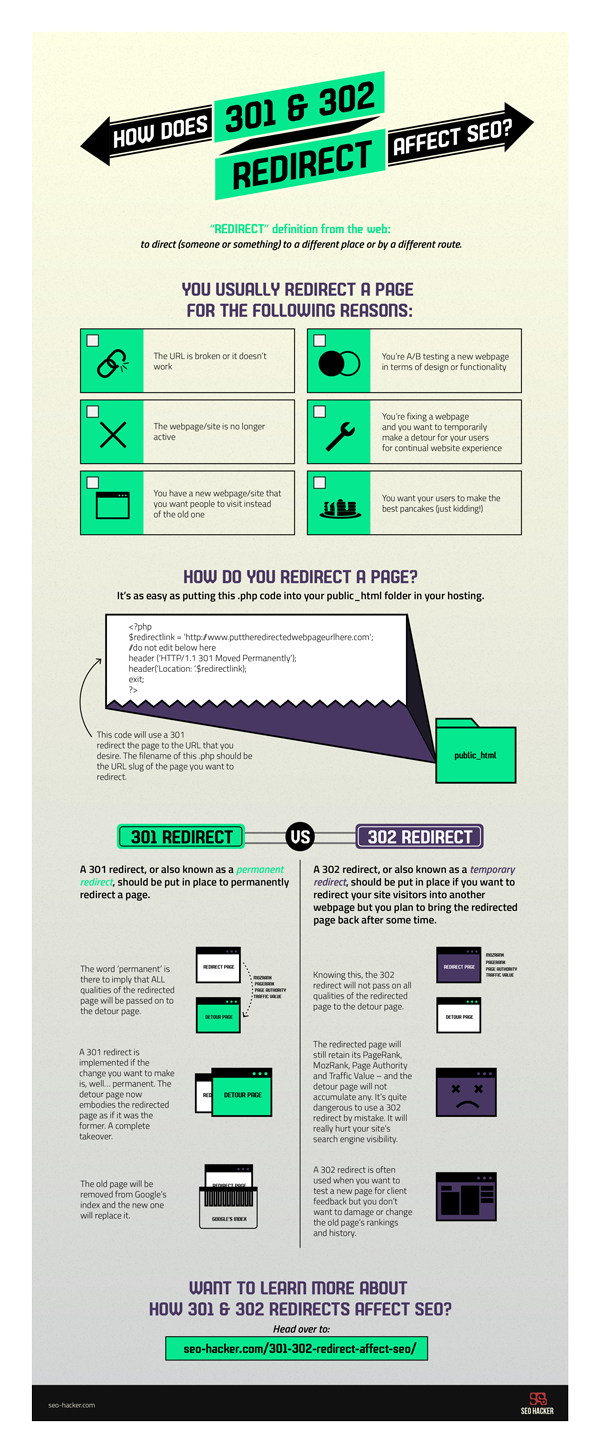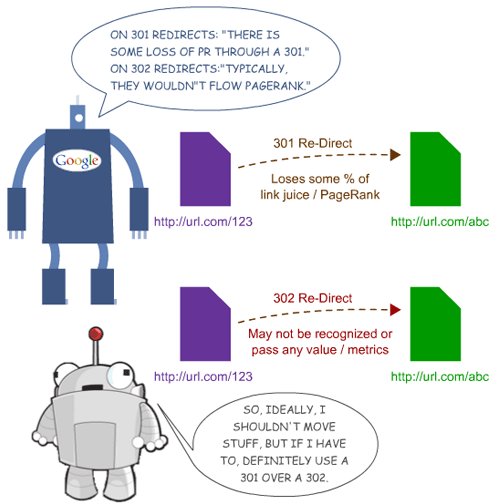How does 301 and 302 Redirect affect SEO?

For the non-technical, a 301 and 302 redirect sounds foreign. Here, we’ll be discussing what a 301 and 302 redirect is, how it affects SEO, and how we can use it.
“Redirect” definition from the web: to direct (someone or something) to a different place or by a different route.
To make it simpler, redirecting a page often means you’re assigning a new URL to it. This is not always the case because sometimes when people use redirection, they also change the design, the coding, the navigation, etc… It depends on what purpose you are redirecting the page.
You usually redirect a page for the following reasons:
- The URL is broken or it doesn’t work
- The webpage/site is no longer active
- You have a new webpage/site that you want people to visit instead of the old one
- You’re A/B testing a new webpage in terms of design or functionality
- You’re fixing a webpage and you want to temporarily make a detour for your users for continual website experience
- You want your users to make the best pancakes (just kidding!)
How do you do it?
It’s as easy as putting this .php code into your public_html folder in your hosting.
<?php
$redirectlink = ‘http://www.puttheredirectedwebpageurlhere.com‘;
//do not edit below here
header (‘HTTP/1.1 301 Moved Permanently’);
header(‘Location: ‘.$redirectlink);
exit;
?>
This code will use a 301 redirect the page to the URL that you desire. The filename of this .php should be the URL slug of the page you want to redirect.
301 Redirect
A 301 redirect, or also known as a permanent redirect, should be put in place to permanently redirect a page. The word ‘permanent’ is there to imply that ALL qualities of the redirected page will be passed on to the detour page.
That includes:
- PageRank
- MozRank
- Page Authority
- Traffic Value
A 301 redirect is implemented if the change you want to make is, well… permanent. The detour page now embodies the redirected page as if it was the former. A complete takeover.
The old page will be removed from Google’s index and the new one will replace it.
302 Redirect
A 302 redirect, or also known as a temporary redirect, should be put in place if you want to redirect your site visitors into another webpage but you plan to bring the redirected page back after some time. Knowing this, the 302 redirect will not pass on all qualities of the redirected page to the detour page.
The redirected page will still retain its PageRank, MozRank, Page Authority and Traffic Value – and the detour page will not accumulate any. It’s quite dangerous to use a 302 redirect by mistake. It will really hurt your site’s search engine visibility.
In most cases, SEO specialists don’t use 302 redirects when fixing the on-site qualities of a website. Instead, a 302 redirect is often used when they want to test a new page for client feedback but they don’t want to damage or change the old page’s rankings and history.
Tips for Keeps: Now that we’ve established which is which, I hope you’ll learn to use the right redirect when you need it.
Image Credit: SEOmoz
